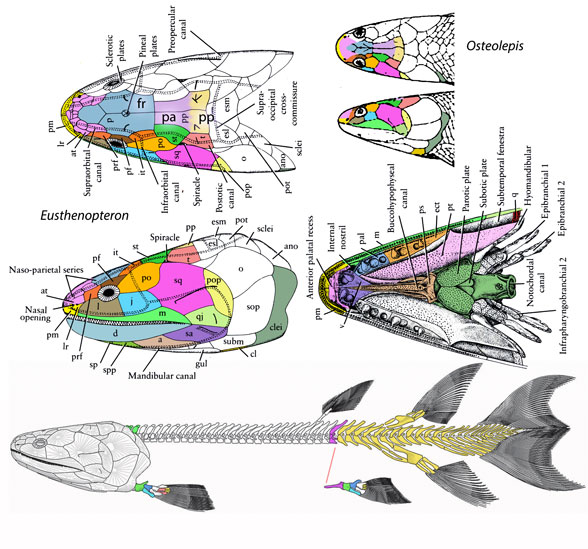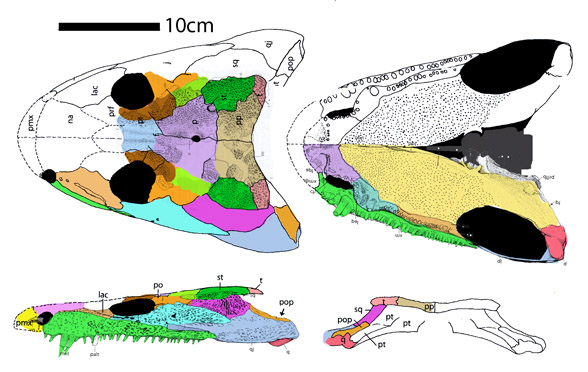Added Feb. 23, 2020:
A suggestion for the second ‘preoperculum’ that does not contact the hyomandibular and quadrate: Call it what it is: a post squamosal.
According to Wikipedia,
“The preoperculum is a crescent-shaped structure that has a series of ridges directed posterodorsally to the organisms canal pores. The preoperculum can be located through an exposed condyle that is present immediately under its ventral margin; it also borders the operculum, suboperculum, and interoperculum posteriorly.”

The wiki-authors are referring to the majority
of preoperculum appearances in vertebrates (Fig.1 ), ignoring the others (Figs. 2-3).

A preoperculum can also appear
as a bone posteriorly bordering the squamosal and quadratojugal (Figs. 2-4). Intervening taxa have no preoperculum, so the various appearances of this bones are not homologous, but keep returning as reversals. Note the appearance of a preoperculum in most extant fish and in unrelated catfish, too.

Among tetrapods
the preoperculum makes a brief reappearance in the Ossinodus (Fig. 4) clade.
